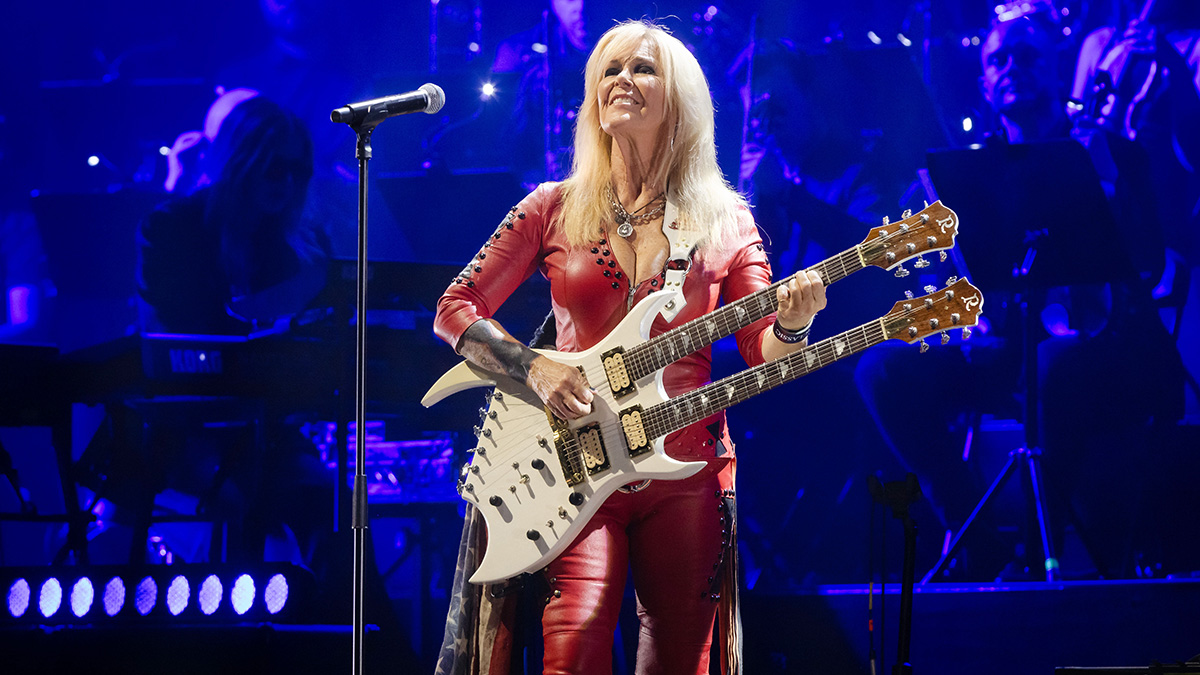“Like Gretsch’s Duo Jet, it was surely spurred by Gibson’s success with the Les Paul”: The mysterious history of the Guild M-75 Aristocrat, the blue-blooded hollowbody played by John Lee Hooker, John Mayer, St. Vincent and Dan Auerbach
This evocative downsized archtop appeared in mid-’50s New York and would go on to delight jazz players and rootsy bluesers alike
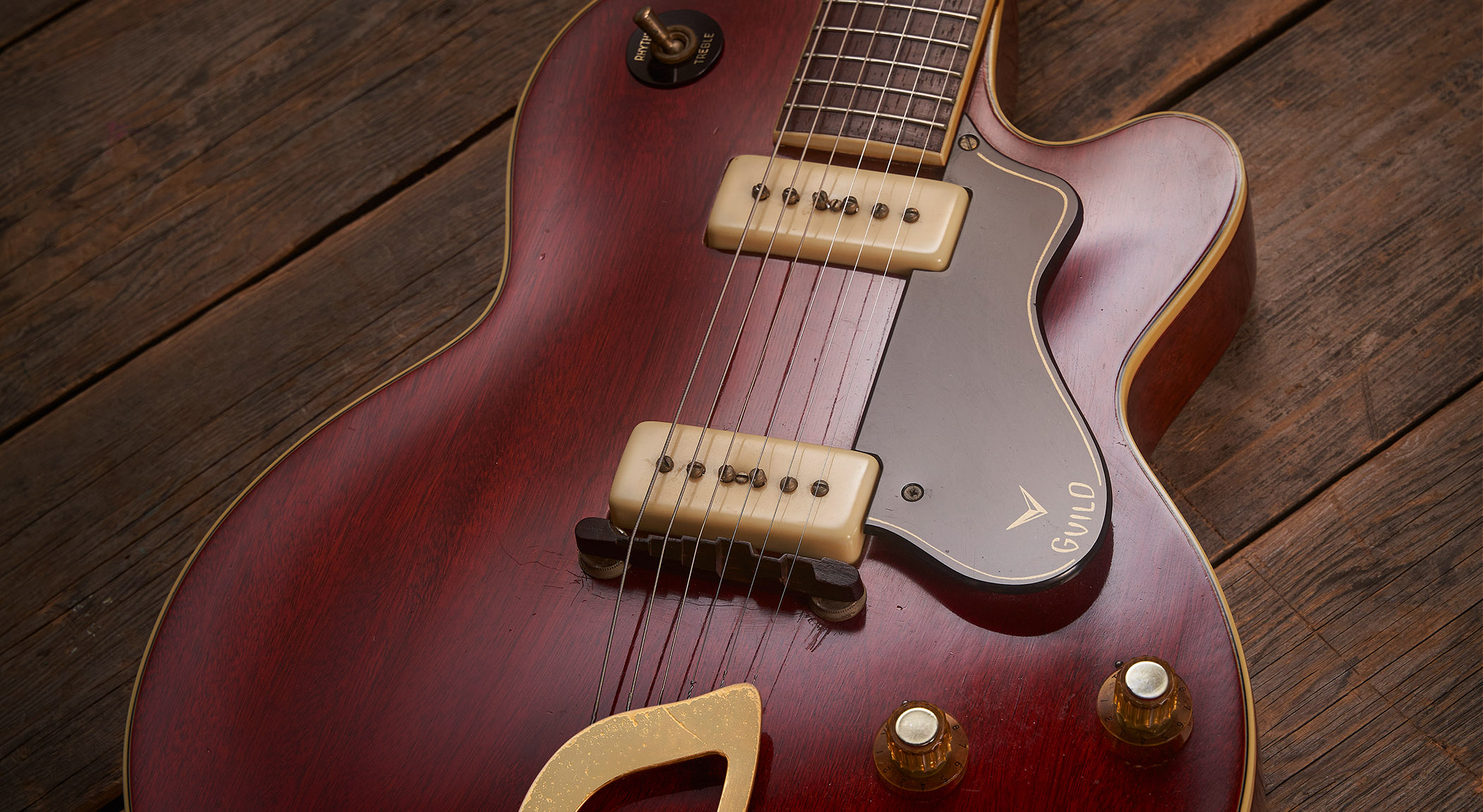
Guild Guitars co-founder Alfred (real name Avram) Dronge was born in Poland in 1911 and emigrated to the US, via a two-year stay in Paris, in 1916, settling in New York City.
As an accomplished musician, he was first a guitar teacher and club player, before opening a music store in the mid-1930s in Manhattan’s Park Row. After some persuasion by friend and ex-Epiphone executive George Mann, Dronge and Mann founded Guild Guitars Inc in October 1952. It would be neither the first nor the last time a retailer or repairer saw opportunity in manufacture.
The workforce assembled in a 1,500-sq ft factory at 536 Pearl Street, comprising craftspeople displaced by leading archtop maker Epiphone, which had moved some operations to Philadelphia in the wake of union disputes.
Eighteen months after its formation, in April 1954 the company would release its first catalogue and price list, referring to itself as “The Stradivari of Guitars” and boasting its first range, mostly consisting of the archtops that were popular at the time.
Among them was an anomalous newcomer, the M-75 Aristocrat, with the catalogue blurb calling it a “midget semi-solid”. Like Gretsch’s Duo Jet, it was surely spurred by Gibson’s success with the Les Paul model that launched in 1952. Both companies’ responses were as compact as the solid, heavy Les Paul – but lighter in contrast.

The Duo Jet was chambered, whereas the M-75 was hollow, like Gibson’s ES-175 or its short-lived contemporary the bantam ES-140T. It launched at $210 and was made until early 1963, costing $280 and pretty much tracking the original Les Paul’s lifespan. No reliable manufacturing or shipping numbers exist, but it’s a pretty rare bird. Most that do surface, including this writer’s 1958 example pictured here, show some wear.
M-75s were offered mainly in a vintage sunburst, slightly yellower than Gibson’s redder-brown of the time. This became cherry sunburst in ’59, echoing the Les Paul. Some were made in Natural Blonde from 1959, which darkens with age, and there’s one rarity with maple sides from 1957.
All the latest guitar news, interviews, lessons, reviews, deals and more, direct to your inbox!
A handful appeared in gold (imitating the Les Paul again) and a very few were introduced in cherry red in 1961, like the transparent ’62 pictured over the page courtesy of a fellow collector. Sides and back were mahogany, but all have obvious straight-grained spruce tops, except the red, which is over mahogany.
Best Dressed
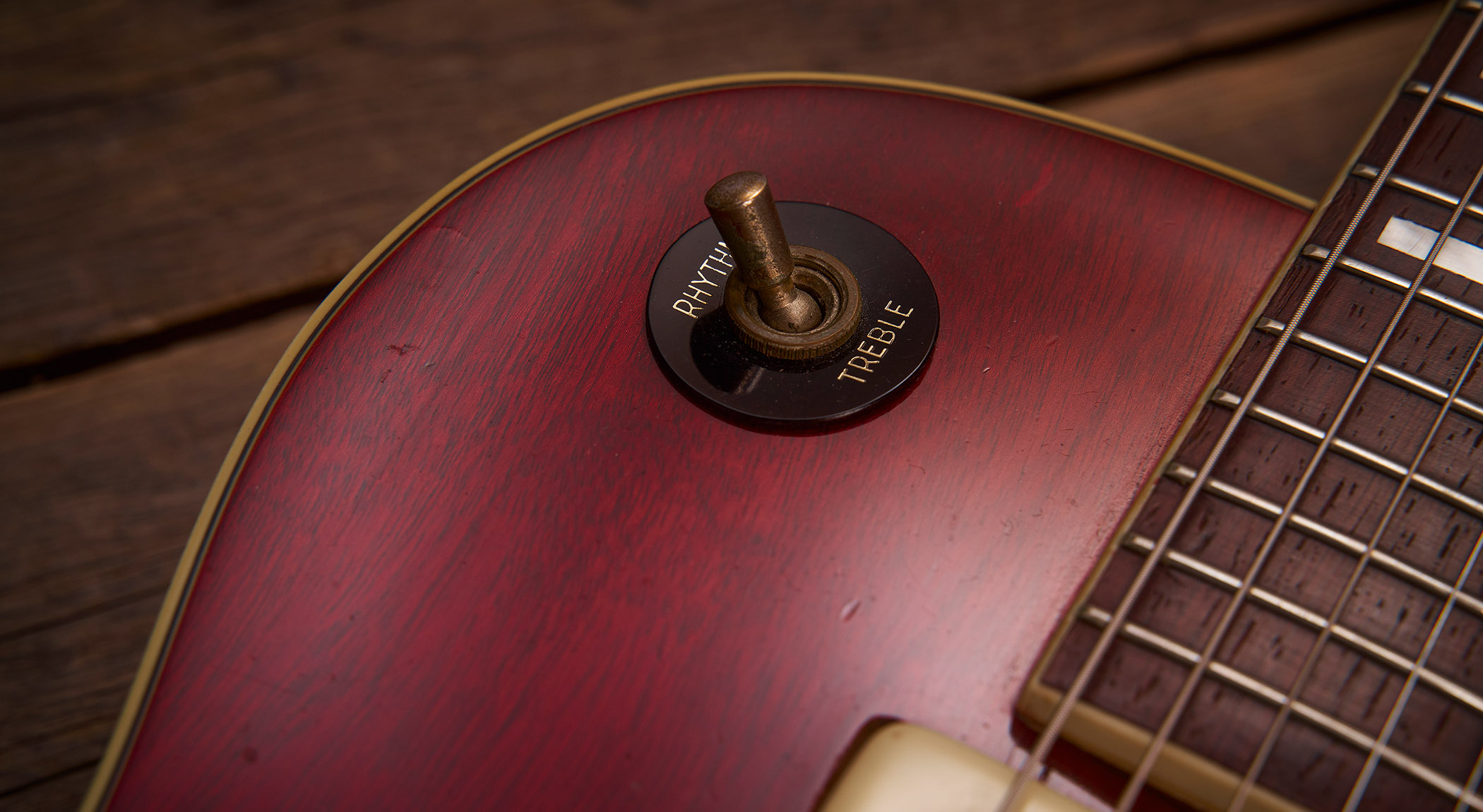
The 24 ¾-inch scale length aped Gibson’s and was unusual for Guild, whose contemporary archtops were 25 ½ inches. Alongside preternaturally slim necks predating Gibson’s from ’60 to ’61, this made for a comfortable, playable instrument.
Headstocks carried Guild’s evolving apex block logo throughout, though a few had the diagonal script logo given to some cheaper models in ’57, when the decorative ‘Chesterfield’ pearloid inlay nicknamed after the cigarette brand also appears. The logo’s D has been touched-in on this example, and the low four-digit serial number is stamped into the rear of headstock where you’d expect it.
Metalwork is gold-plated throughout, including the pickups’ polepiece screws. The G-logo lyre tailpiece is common to several Guilds, but the machineheads – gold-plated Klusons with ivory plastic buttons – are unique to the model and so almost impossible to replace if, as can happen, one fails, which might explain the old but aftermarket Grovers on the red one.
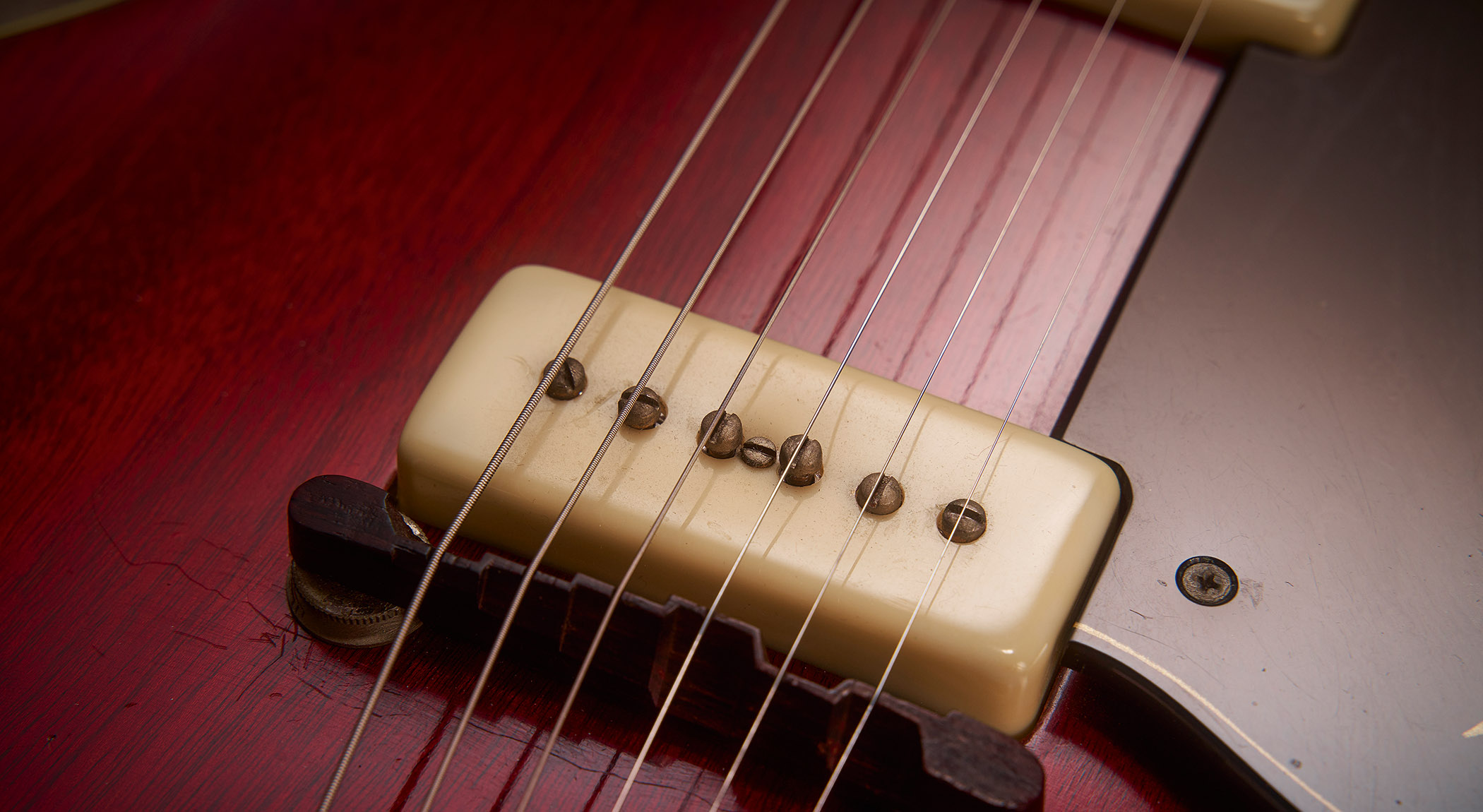
The gold-plated strap button located inconveniently close to the neck heel is correct and contrasts with an ivory plastic peg at the tail, which becomes metal on later examples.
The unmarked control knobs are redolent of those seen on early Gibson ES-175s from 1949 and 1950. By ’59, Guild introduced its version of reflector knobs (some carry a G logo, these don’t) with gold pins functioning like Gibson’s collar-mounted pointer arrows.
Pickguards were bevelled three-ply plastic with a thick white core. The thinner and rather ornate bellied truss rod cover was also three-ply. By ’59, a single-ply pickguard with rounded edge and Guild legend took over, while the truss rod cover became black anodised metal with an etched shield motif.
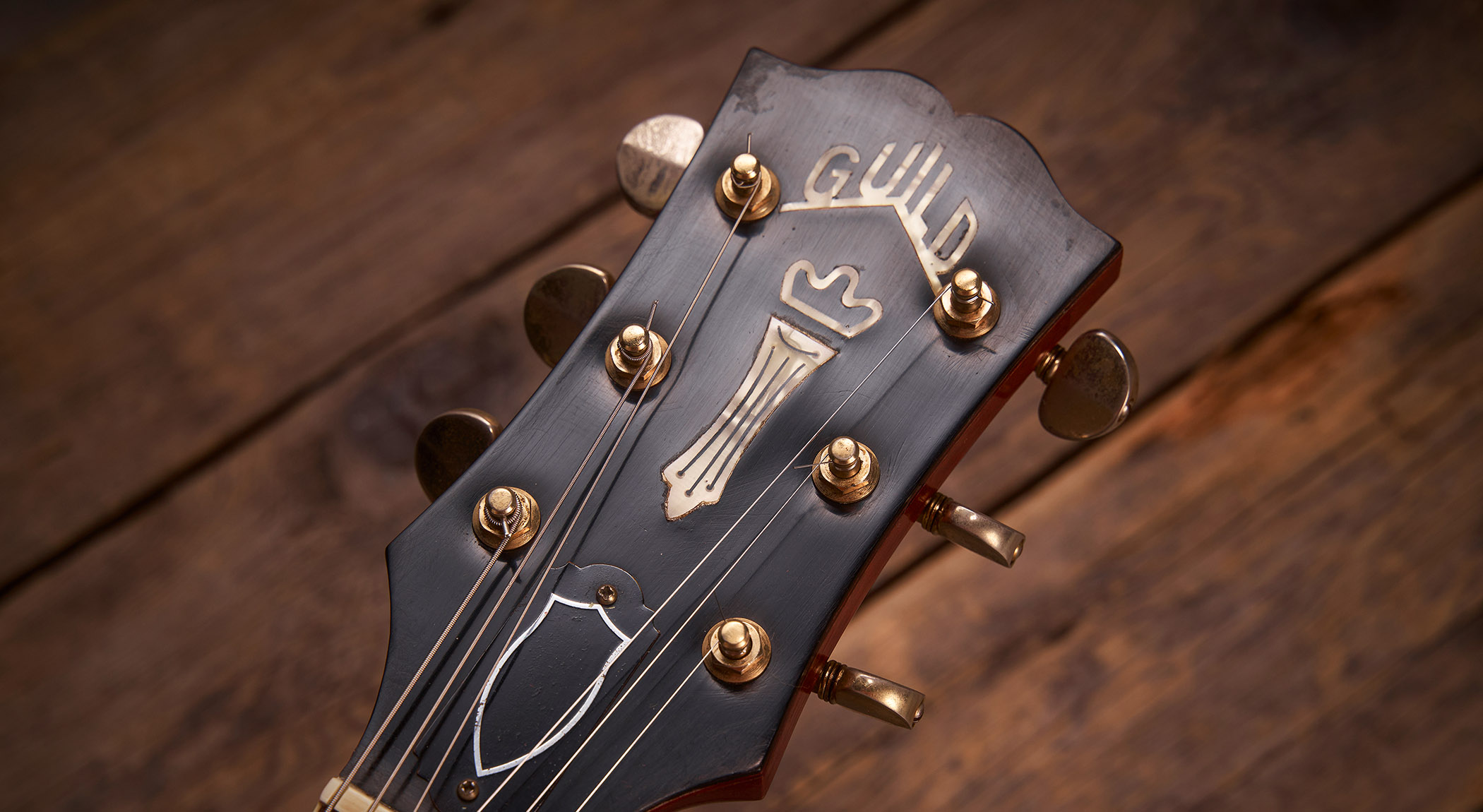
The earliest examples have 10 block-inlay neck position markers, the upper two disappearing by the end of ’58. Neither of these has seen any crystallisation, shrinkage or lifting of body or neck binding, which was a common occurrence among early plastics.
In the middle position, both pickups are engaged in series and sound quite reedy, further emphasising the hollowbody’s woody sound
The pickups – always two on an M-75 – look like Gibson soapbars, but they were made by nearby New York state neighbours Franz and known as ‘Frequency Tested’ pickups. With lower DC resistances of typically around 5kohms, they’re not as rich or warm as Gibson’s rightly celebrated P-90, which measure between 7.5k and 9k. History has judged that they were poorly made and inconsistent, but they have a distinct tone of their own, whether clean or driven.
In the middle position, both pickups are engaged in series and sound quite reedy, further emphasising the hollowbody’s woody sound. The guitar has no soundholes but is still susceptible to feedback, and the pickups are quite microphonic. The sunburst’s pickup covers don’t match, which was not uncommon in 50s guitars.
A case of slack quality control or those early plastics again? The last models from 1962 to ’63 sometimes sported DeArmond Dynasonic single coils like those on earlier Duo Jets. Guild was also using these on its Starfire models by then.
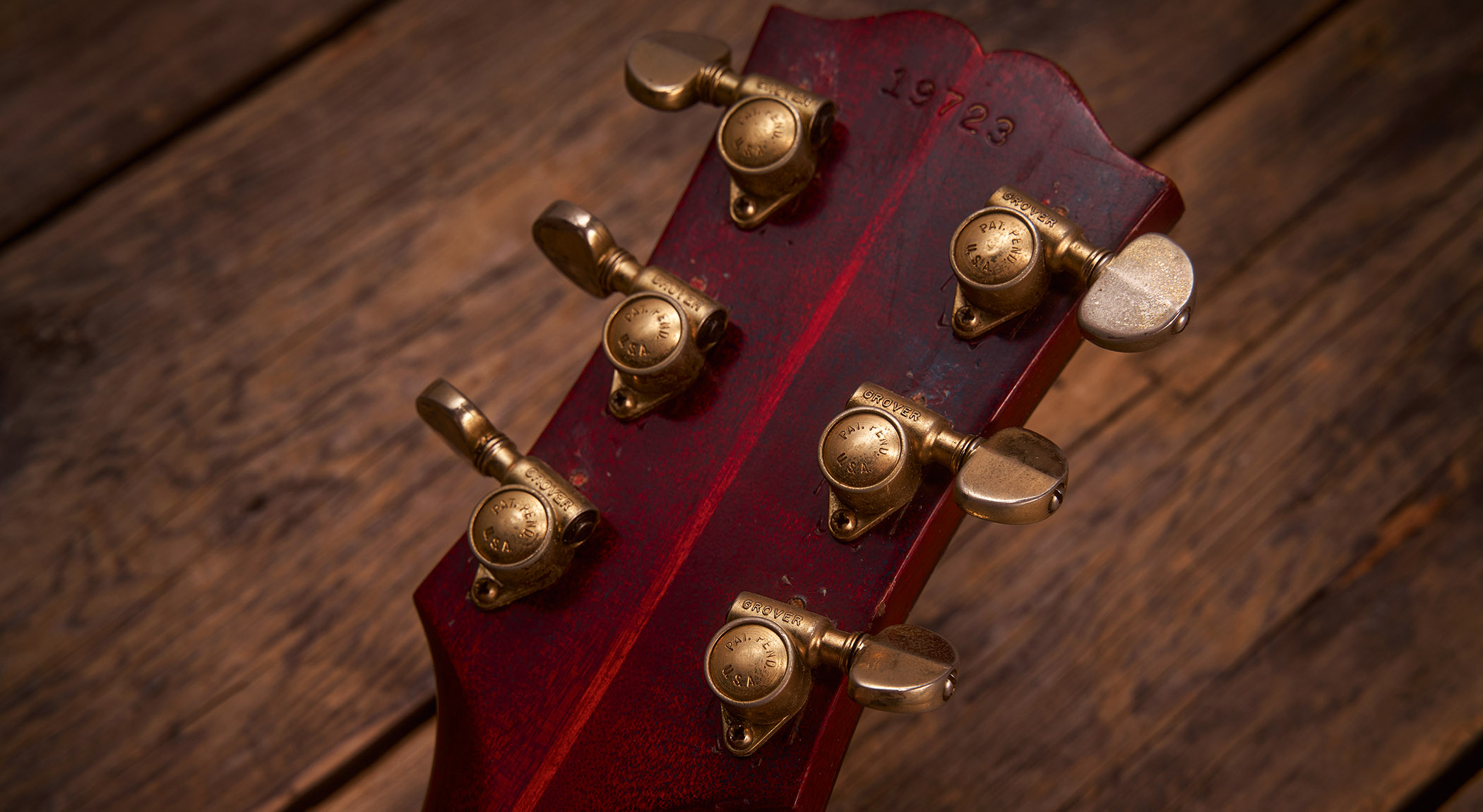
Vintage Appointments
Early Aristocrats had an archtop-style wooden bridge with a straight saddle and two separate feet, adjustable for height only. The sunburst’s intonated one is aftermarket; they were among the several changes introduced in 1959 in order to remain competitive.
Tops often crack along the spruce’s longitudinal grain around the pickup selector switch, and the later red example has a ‘poker chip’ surround protecting its mahogany top. Output jacks on both guitars are original and in good shape, despite being mounted direct into the sides, and the accompanying cases followed Gibson’s trajectory from brown, sometimes snakeskin, with maroon lining to yellow-lined black later.
Aristocrat models lend themselves more to roots than rock, and don’t tend to fetch serious vintage money, though their prices still reflect their scarcity. Good ones are hard to come across, but every Guild this writer has played has been well built. Maybe Guild as a company felt it had to try harder, or perhaps the builders were just more conscientious. These are no exception, though; being hollow, they’re also really light, almost flimsy.
Famous players are few but include John Lee Hooker, John Mayer, St Vincent and Dan Auerbach of The Black Keys.
The M-75 was reintroduced in 1967 and became known as the ‘BluesBird’ in 1968 – apparently named by Louis Dronge (younger brother of Guild founder, Alfred) due to its popularity with blues players – and it’s this model that has been associated with West Coast fusion sessioneer Larry Carlton, though corroborating pictures are hard to find. The M-75 would pave the way for several excellent if still rather marginal successors, including the Nightbird/BluesBird series.
- With thanks to Hans Moust, author of The Guild Guitar Book, to UK performer, teacher and collector Tim Pells for additional information, and his colleague who prefers to remain anonymous for kind access to the red ’62.
Bob Wootton is a British guitar player and vintage collector.
Towards the end of a successful – and long – career in advertising he started writing and now contributes to various media on marketing, advertising and guitar-related matters, notably for the world-leading Guitarist magazine.
As tech for his friend and mentor, highly-regarded guitarist Alan Darby, he was part of Eric Clapton’s core team at his 2019 Crossroads fundraiser festival in Dallas. He now advises, mentors and assists other players.
He works regularly on the music scene around London, surrounding himself with better players to raise his game. Not difficult, some might say. He runs a couple of YouTube channels too.


